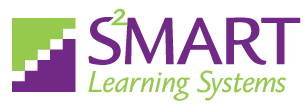Having been reared in the Midwest, I am very familiar with snow and snowballs, so when I heard a teacher use the term “snowball effect” during a recent coaching call, the familiar metaphor caught my attention. We were discussing how the staff at her middle school had embraced the SMART School Improvement Process more in the second year of implementation than in the first, prompting me to ask why. The reply was that “Our leadership team has been moving forward with our SMART Goals, teachers are realizing that the process is working as their student achievement has improved and, as a result, the outlier teachers are beginning to buy into the process, as well.” What great testimony about how school change and improvement can snowball.
I have been honored to serve as a facilitator and coach for 8 schools in Rockford during the past year and a half. During that period, more than 200 teachers, principals and administrators from 47 Rockford schools have been trained in the SMART School Improvement Process. These school teams were expected to take their learning back to their schools and train their staffs in this focused approach to school improvement. During our work together in the first year I heard from teams about the varying degree of acceptance and buy-in for the training by district schools. In this, the second year of implementation, I have been gratified to hear that most of the schools are seeing positive results as their staff members continue to implement their SMART strategies.
Why are things snowballing in Rockford?
I’ve heard from several school teams that the success is due to the messaging from both the Superintendent and leaders of the teacher union. These leaders have spoken at our training sessions, encouraging team members to embrace the SMART training because it gives them a voice and ownership in the process. The Superintendent is also sending the message that the district is changing from a “top-down” system to one in which teachers have more autonomy for making decisions in their classrooms. Finally, teams are also hearing a message of consistency – that this is how we all do it in Rockford.
One of my fellow SMART coaches told me that in one of her schools there were many skeptical staff when they started the process, including members of their own SMART Leadership Team. But when they began to see great gains in their classrooms, gains that continued into year two, teachers became very excited. She said you can hear the excitement in their voices whenever you talk to them, as well as their genuine enthusiasm and positive energy for working the process.
Another of my coach colleagues reported that a high school staff was struggling with how they could all focus on the same school goals in the various subject areas taught in high schools. The change came when their administrator operationalized what it would look like and began doing the work side by side with the teachers. Buy-in began once they understood how their SMART Goals would work across departments and the staff had a model to follow. In this case, the positive power of strong leadership made a huge difference.
One school engaged more staff after the SMART Leadership Team analyzed data and completed their SMART Goal tree. The team then turned the goal over to the staff at large who zeroed in and justified narrowing the scope of the goal. The administrator and SMART Team collaborated with staff to modify the Goal tree which made the staff feel valued and heard. The lesson was that buy-in was greater after spending collaborative time up front, during what we refer to as the “storming” and “norming” stages, rather than trying to convince people later.
I’ve heard from several school teams that “being on the same page” – i.e., they were all trained together at the same time on a single process, using a common language and concepts – has been beneficial to their success. The experience in Rockford has truly demonstrated the importance of consistency in professional development when it comes to training all schools using the same materials, presenters, and protocols in order to maintain the fidelity of the SMART School Improvement Process.
Sharing early successes at the 2015 Learning Forward Annual Conference
In early December, 2015, a team composed of the Rockford Superintendent, teacher union (REA) vice president, Consortium for Educational Change (CEC) representatives, and SMART Learning Systems CEO and Director of Learning presented at the annual Learning Forward conference in Washington D.C. The message they delivered outlined ten early successes in Rockford, including: increases in the average ACT score; improved attendance and graduation rate; a truancy rate better than the state average; and surveys showing a positive staff and community belief that the district is moving in the right direction. In other words, the snowball effect has already helped Rockford evolve from a system of schools to a true school system thanks to the dedication, perseverance and hard work of everyone involved.
Kiett Takkunen
